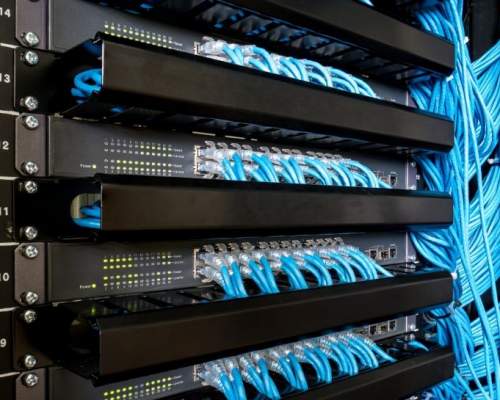The Ultimate Guide to Structured Cabling Infrastructure Services for Businesses

In today's dynamic digital landscape, businesses depend on smooth and effective communication networks. Whether it’s data transfer, voice communications, or internet connectivity, a robust network infrastructure is essential. That’s why cabling infrastructure services play a crucial role.
Structured cabling provides a standardized approach to network cabling, ensuring high performance, scalability, and reliability. Unlike traditional point-to-point cabling, structured cabling is an organized system that supports multiple hardware uses and can adapt to future technological advancements.
In this blog, we’ll explore the benefits, and key aspects of structured cabling infrastructure services for businesses, helping you understand why it’s a smart investment for long-term growth.
What is Structured Cabling Infrastructure?
Structured cabling is a comprehensive system of cables, patch panels, and related hardware that creates a unified telecommunications infrastructure. It supports data, voice, video and other network services from one building to another.
A well-designed structured cabling system follows industry standards and consists of six essential features:
- Entrance Facilities – Where external cabling connects to the internal network.
- Equipment Rooms – Houses servers, switches, and other critical hardware.
- Backbone Cabling – Connects different floors or buildings (also called vertical cabling).
- Horizontal Cabling – Runs from telecom rooms to individual workstations.
- Telecommunications Rooms – Intermediate spaces where connections are managed.
- Work Area Components – Includes outlets, patch cables, and end-user devices.
Key Benefits of Structured Cabling Infrastructure:
Structured cabling offers long-term benefits such as improved network performance, enhanced data migration, and seamless internal communication.
- Enhanced Performance & Reliability
Structured cabling minimizes signal interference and downtime, ensuring high-speed data transmission with minimal latency. Unlike ad-hoc cabling, it reduces the risk of network failures, keeping businesses operational.
- Scalability for Future Growth
As businesses expand, their network needs grow. Structured cabling allows for easy upgrades without overhauling the entire system. Adding new devices or applications becomes hassle-free.
- Cost-Effective in the Long Run
While the initial investment may seem high, structured cabling reduces maintenance costs over time. Its organized layout makes troubleshooting easier, lowering IT support expenses.
- Simplified Management & Maintenance
With a well-labeled and standardized system, IT teams can quickly identify and fix issues, reducing downtime. Patch panels and color-coded cables streamline network management.
- Supports Multiple Technologies
Structured cabling is versatile, supporting voice, data, video, and IoT devices on a single infrastructure. This eliminates the need for separate cabling systems for different applications.
- Improved Aesthetics & Safety
A structured system eliminates cable clutter, reducing tripping hazards and fire risks. It also enhances the professional appearance of office spaces.
Structured cabling infrastructure offerings typically include:
- Professional Design & Installation
A well-planned cabling layout ensures optimal performance. Certified technicians assess business needs and design a system that meets current and future demands.
- Compliance with Industry Standards
Adhering to TIA/EIA, ISO, and BICSI standards ensures compatibility, safety, and performance. Compliance also helps in avoiding legal and operational issues.
- High-Quality Components
Using Category 6 (Cat6), Cat6a, or fiber optic cables ensures high bandwidth and faster data transfer rates. Quality connectors and patch panels enhance durability.
- Testing & Certification
After installation, structured cabling systems undergo rigorous testing to verify performance. Certification guarantees that the network meets required specifications.
- Future-Proofing the Network
A forward-thinking approach includes fiber optic readiness, support for Power over Ethernet (PoE), and scalability for emerging technologies like 5G and smart buildings.
- Ongoing Support & Maintenance
Regular inspections, upgrades, and troubleshooting ensure the cabling system remains efficient. Managed service providers offer 24/7 monitoring for uninterrupted operations.
Conclusion
Investing in structured cabling infrastructure services is a strategic decision that enhances network performance, scalability, and cost-efficiency for businesses. With its organized approach, high reliability, and adaptability to future technologies, structured cabling is the backbone of modern IT ecosystems.
Whether you’re setting up a new office or upgrading an existing network, partnering with a professional cabling service provider ensures a seamless, high-performance, and future-ready infrastructure. Don’t let poor cabling hold your business back—opt for a structured solution today and experience smoother, faster, and more efficient connectivity.
By choosing structured cabling, businesses can boost productivity, reduce downtime, and stay ahead in the competitive digital landscape.
Would you like to upgrade your business’s network infrastructure? Contact our experts today for a customized structured cabling solution!
